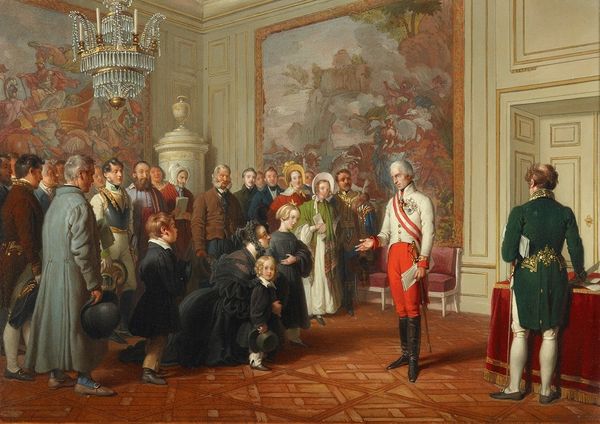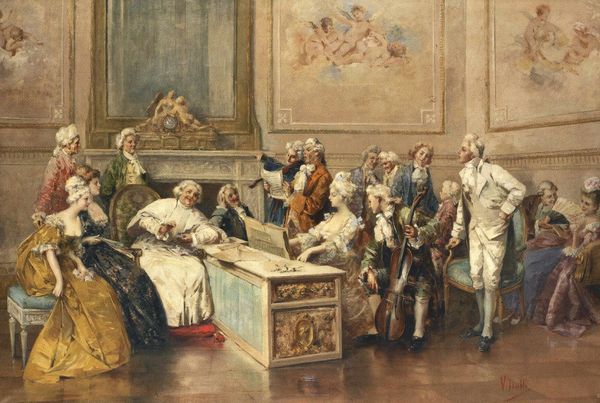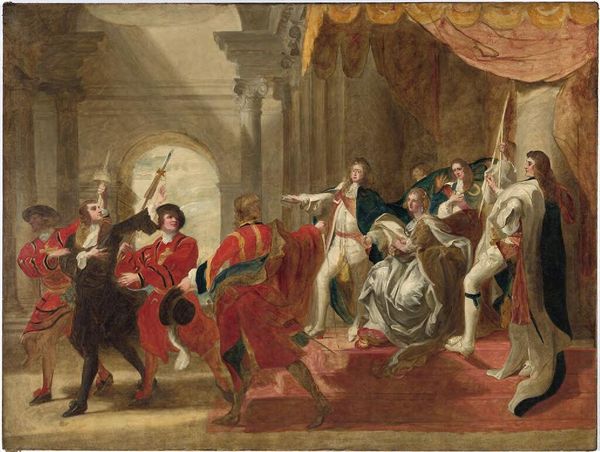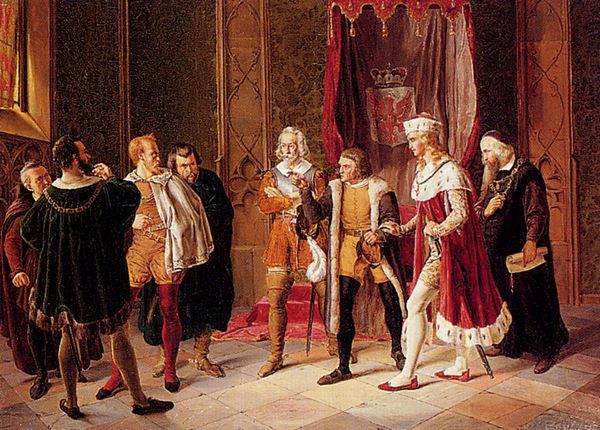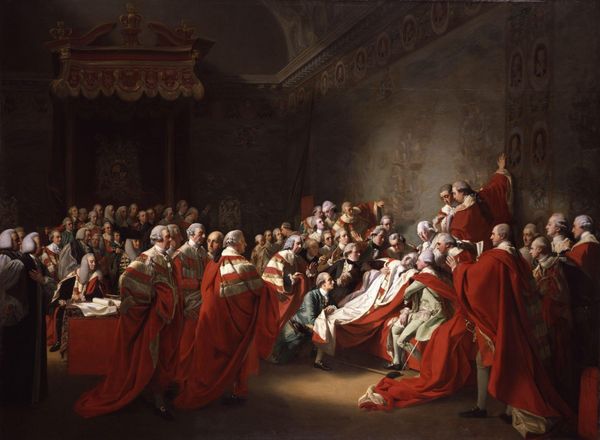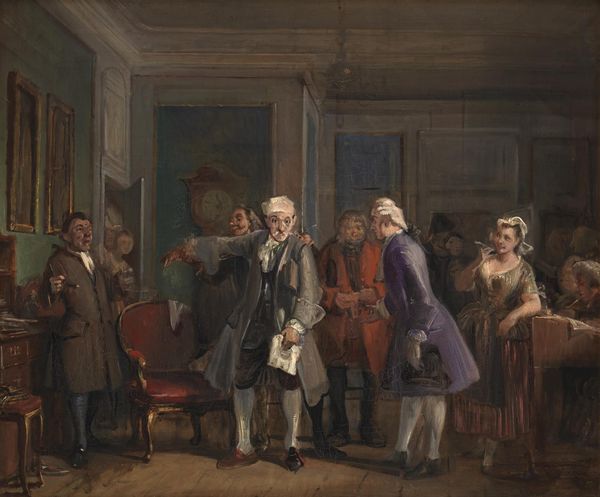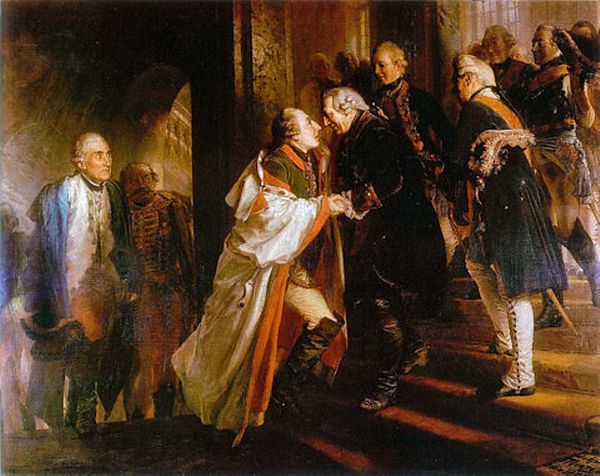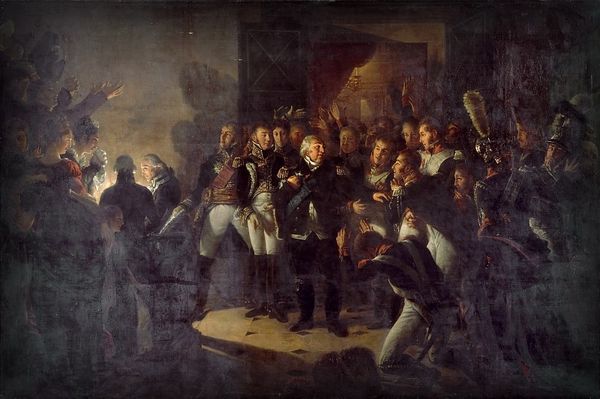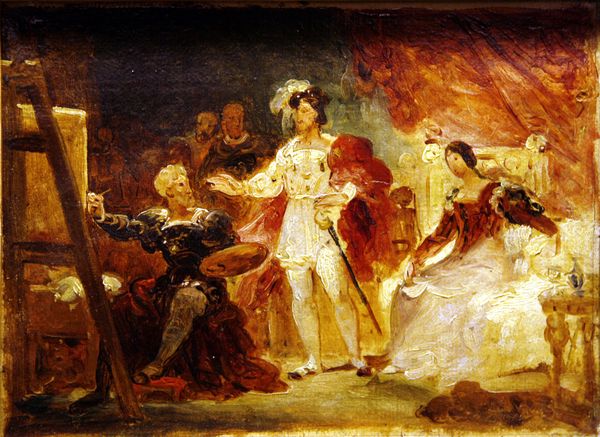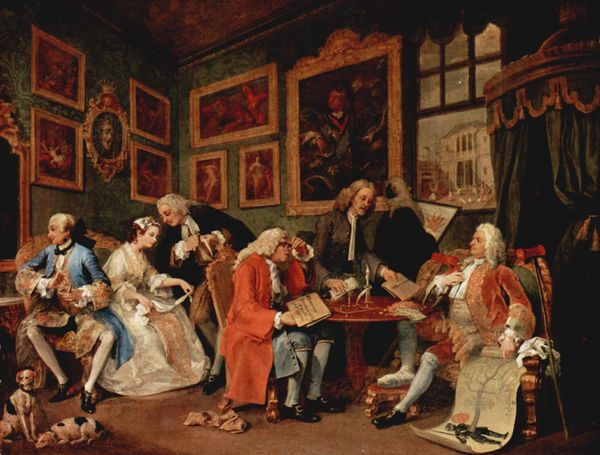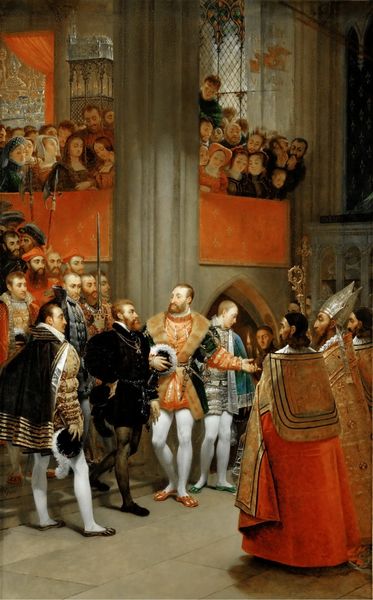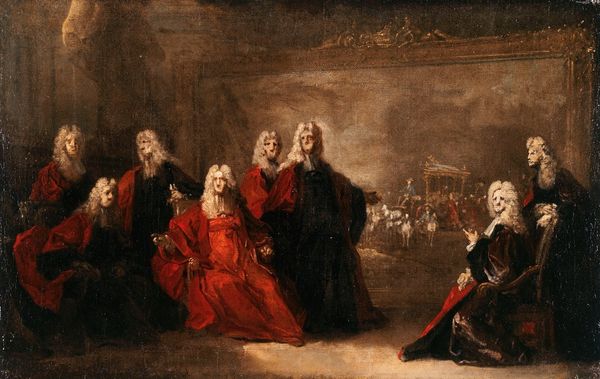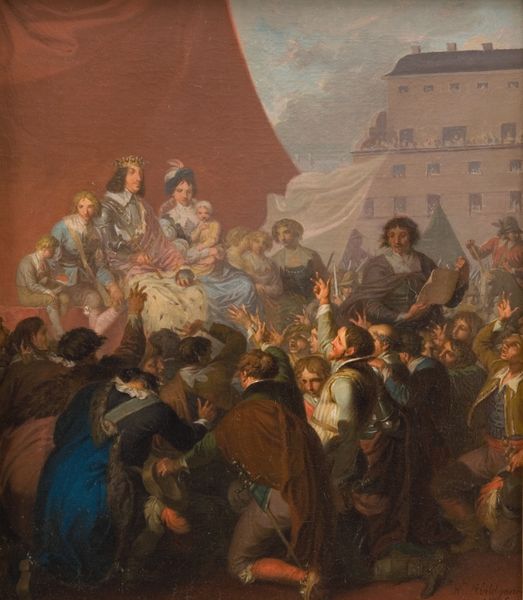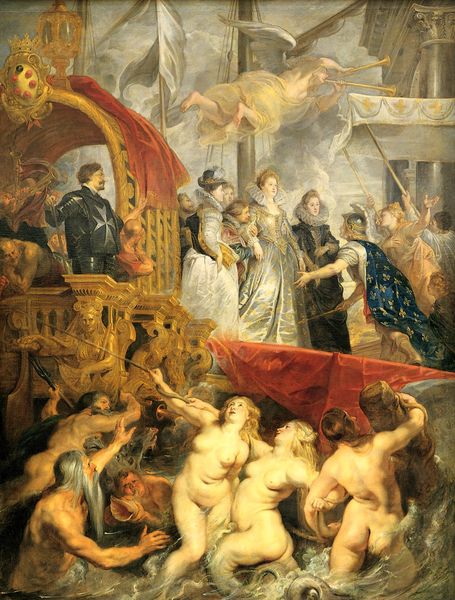
Dimensions: 282 x 487 cm
Copyright: Public domain
Editor: This is Jan Matejko's *The Fall of Poland*, painted in 1866 using oil paints. It's hard not to be swept away by the emotion radiating from this scene – a sense of chaos, and maybe betrayal? What stands out to you most when you look at this work? Curator: My eye immediately goes to the potent symbolism. Notice the body on the floor in the foreground, ripping at his clothing. This isn't just a random figure; it’s a powerful representation of Poland itself, wounded and vulnerable, as the suggestion of suicide hints to complete desolation. Even the pointing figures in the middle bear witness to the transference of Poland, or perhaps their guilt is weighing heavy on them as Poland collapses? How do the expressions of the figures strike you? Editor: It is quite overwhelming, especially how varied they are. The women by the window look almost nonchalant, which, compared to the distress elsewhere, seems… cruel? Curator: Exactly. This deliberate contrast enhances the painting's narrative. These figures can evoke questions about responsibility and indifference. They are symbols of a society fragmented, perhaps foreshadowing Poland's partitioning. Think of each character as embodying different facets of a collapsing nation. Does that reading shift your understanding of the overall composition? Editor: It does! It's like Matejko is using each person as a puzzle piece to explain the end of Poland. I appreciate how this symbolic view transforms what I initially perceived as just a historical painting. Curator: Indeed. Matejko masterfully weaves together historical narrative and symbolic language. Understanding those visual cues adds layers of meaning to the historical weight of the scene, doesn't it? Editor: Absolutely. I’ll never look at a historical painting the same way. Curator: Neither will I.
Comments
No comments
Be the first to comment and join the conversation on the ultimate creative platform.
